Real-Time Calculation of CO2 Conversion in Radio-Frequency Discharges under Martian Pressure by Introducing Deep Neural Network
Abstract
:1. Introduction
2. Description of Methodology
2.1. Description of Fluid Model
2.2. Description of DNN
2.3. Validation of DNN
3. Results and Discussion
4. Conclusions
Author Contributions
Funding
Institutional Review Board Statement
Informed Consent Statement
Data Availability Statement
Conflicts of Interest
References
- Meyen, F.E.; Hecht, M.H.; Hoffman, J.A.; Team, M. Thermodynamic model of Mars oxygen ISRU experiment (MOXIE). Acta Astronaut. 2016, 129, 82–87. [Google Scholar] [CrossRef]
- Starr, S.O.; Muscatello, A.C. Mars in situ resource utilization: A review. Planet. Space Sci. 2020, 182, 104824. [Google Scholar] [CrossRef]
- Chen, H.; du Jonchay, T.S.; Hou, L.; Ho, K. Integrated in-situ resource utilization system design and logistics for Mars exploration. Acta Astronaut. 2020, 170, 80–92. [Google Scholar] [CrossRef]
- Hoffman, J.A.; Hecht, M.H.; Rapp, D.; Hartvigsen, J.J.; SooHoo, J.G.; Aboobaker, A.M.; McClean, J.B.; Liu, A.M.; Hinterman, E.D.; Nasr, M. Mars Oxygen ISRU Experiment (MOXIE)—Preparing for human Mars exploration. Sci. Adv. 2022, 8, eabp8636. [Google Scholar] [CrossRef] [PubMed]
- Hartvigsen, J.; Elangovan, S.; Elwell, J.; Larsen, D. Oxygen production from Mars atmosphere carbon dioxide using solid oxide electrolysis. ECS Trans. 2017, 78, 2953. [Google Scholar] [CrossRef]
- Gupta, T.T.; Ayan, H. Application of non-thermal plasma on biofilm: A review. Appl. Sci. 2019, 9, 3548. [Google Scholar] [CrossRef]
- Hati, S.; Patel, M.; Yadav, D. Food bioprocessing by non-thermal plasma technology. Curr. Opin. Food Sci. 2018, 19, 85–91. [Google Scholar] [CrossRef]
- Li, S.; Dang, X.; Yu, X.; Abbas, G.; Zhang, Q.; Cao, L. The application of dielectric barrier discharge non-thermal plasma in VOCs abatement: A review. Chem. Eng. J. 2020, 388, 124275. [Google Scholar] [CrossRef]
- Guerra, V.; Silva, T.; Pinhão, N.; Guaitella, O.; Guerra-Garcia, C.; Peeters, F.J.J.; Tsampas, M.N.; van de Sanden, M.C.M. Plasmas for in situ resource utilization on Mars: Fuels, life support, and agriculture. J. Appl. Phys. 2023, 51, 49–59. [Google Scholar] [CrossRef]
- George, A.; Shen, B.; Craven, M.; Wang, Y.; Kang, D.; Wu, C.; Tu, X. A Review of Non-Thermal Plasma Technology: A novel solution for CO2 conversion and utilization. Renew. Sustain. Energy Rev. 2021, 135, 109702. [Google Scholar] [CrossRef]
- Guerra, V.; Silva, T.; Ogloblina, P.; Grofulović, M.; Terraz, L.; da Silva, M.L.; Pintassilgo, C.D.; Alves, L.L.; Guaitella, O. The case for in situ resource utilisation for oxygen production on Mars by non-equilibrium plasmas. Plasma Sources Sci. Technol. 2017, 26, 11LT01. [Google Scholar] [CrossRef]
- Ogloblina, P.; Morillo-Candas, A.S.; Silva, A.F.; Silva, T.; Tejero-del Caz, A.; Alves, L.L.; Guaitella, O.; Guerra, V. Mars in situ oxygen and propellant production by non-equilibrium plasmas. Plasma Sources Sci. Technol. 2021, 30, 065005. [Google Scholar] [CrossRef]
- Yu, Q.Q.; Kong, M.; Liu, T.; Fei, J.H.; Zheng, X.M. Characteristics of the decomposition of CO2 in a dielectric packed-bed plasma reactor. Plasma Chem. Plasma Process. 2012, 32, 153–163. [Google Scholar] [CrossRef]
- Aerts, R.; Somers, W.; Bogaerts, A. Carbon dioxide splitting in a dielectric barrier discharge plasma: A combined experimental and computational study. ChemSusChem 2015, 8, 702–716. [Google Scholar] [CrossRef] [PubMed]
- Zhang, H.; Li, L.; Li, X.D.; Wang, W.Z.; Yan, J.H.; Tu, X. Warm plasma activation of CO2 in a rotating gliding arc discharge reactor. J. CO2 Util. 2018, 27, 472–479. [Google Scholar] [CrossRef]
- Nunnally, T.; Gutsol, K.; Rabinovich, A.; Fridman, A.; Gutsol, A.; Kemoun, A. Dissociation of CO2 in a low current gliding arc plasmatron. J. Phys. Appl. Phys. 2011, 44, 274009. [Google Scholar] [CrossRef]
- Ong, M.Y.; Nomanbhay, S.; Kusumo, F.; Show, P.L. Application of microwave plasma technology to convert carbon dioxide (CO2) into high value products: A review. J. Clean. Prod. 2022, 336, 130447. [Google Scholar] [CrossRef]
- Chen, G.; Britun, N.; Godfroid, T.; Georgieva, V.; Snyders, R.; Delplancke-Ogletree, M.P. An overview of CO2 conversion in a microwave discharge: The role of plasma-catalysis. J. Phys. Appl. Phys. 2017, 50, 084001. [Google Scholar] [CrossRef]
- Spencer, L.F.; Gallimore, A.D. Efficiency of CO2 dissociation in a radio-frequency discharge. Plasma Chem. Plasma Process. 2011, 31, 79–89. [Google Scholar] [CrossRef]
- Stanković, V.V.; Ristić, M.M.; Vojnović, M.M.; Aoneas, M.M.; Poparić, G.B. Ionization and Electronic State Excitation of CO2 in Radio-frequency Electric Field. Plasma Chem. Plasma Process. 2020, 40, 1621–1637. [Google Scholar] [CrossRef]
- Huang, Q.; Zhang, D.; Wang, D.; Liu, K.; Kleyn, A.W. Carbon dioxide dissociation in non-thermal radiofrequency and microwave plasma. J. Phys. Appl. Phys. 2017, 50, 294001. [Google Scholar] [CrossRef]
- Snoeckx, R.; Bogaerts, A. Plasma technology–a novel solution for CO2 conversion? Chem. Soc. Rev. 2017, 46, 5805–5863. [Google Scholar] [CrossRef] [PubMed]
- Zhang, Y.T.; Cui, S.Y. Frequency effects on the electron density and α-γ mode transition in atmospheric radio frequency discharges. Phys. Plasmas 2011, 18, 083509. [Google Scholar] [CrossRef]
- Zhang, Y.T.; He, J. Frequency effects on the production of reactive oxygen species in atmospheric radio frequency helium-oxygen discharges. Phys. Plasmas 2013, 20, 013502. [Google Scholar] [CrossRef]
- Aerts, R.; Martens, T.; Bogaerts, A. Influence of vibrational states on CO2 splitting by dielectric barrier discharges. J. Phys. Chem. 2012, 116, 23257–23273. [Google Scholar] [CrossRef]
- Kozák, T.; Bogaerts, A. Splitting of CO2 by vibrational excitation in non-equilibrium plasmas: A reaction kinetics model. Plasma Sources Sci. Technol. 2014, 23, 045004. [Google Scholar] [CrossRef]
- Ponduri, S.; Becker, M.; Welzel, S.; Van De Sanden, M.; Loffhagen, D.; Engeln, R. Fluid modelling of CO2 dissociation in a dielectric barrier discharge. J. Appl. Phys. 2016, 119, 093301. [Google Scholar] [CrossRef]
- Fu, Q.; Wang, Y.; Chang, Z. Study on the conversion mechanism of CO2 to O2 in pulse voltage dielectric barrier discharge at Martian pressure. J. CO2 Util. 2023, 70, 102430. [Google Scholar] [CrossRef]
- Wang, X.C.; Zhang, T.H.; Sun, Y.; Wu, Z.C.; Zhang, Y.T. Numerical study on discharge characteristics and plasma chemistry in atmospheric CO2 discharges driven by pulsed voltages. Phys. Plasmas 2022, 29, 023505. [Google Scholar] [CrossRef]
- Amanatides, E.; Mataras, D. Frequency variation under constant power conditions in hydrogen radio frequency discharges. J. Appl. Phys. 2001, 89, 1556–1566. [Google Scholar] [CrossRef]
- Zhang, Y.T.; Li, Q.Q.; Lou, J.; Li, Q.M. The characteristics of atmospheric radio frequency discharges with frequency increasing at a constant power density. Appl. Phys. Lett. 2010, 97, 141504. [Google Scholar] [CrossRef]
- Anirudh, R.; Archibald, R.; Asif, M.S.; Becker, M.M.; Benkadda, S.; Bremer, P.T.; Budé, R.H.; Chang, C.S.; Chen, L.; Churchill, R.; et al. 2022 review of data-driven plasma science. IEEE Trans. Plasma Sci. 2023, 51, 1750–1838. [Google Scholar] [CrossRef]
- He, M.; Bai, R.; Tan, S.; Liu, D.; Zhang, Y. Data-driven plasma science: A new perspective on modeling, diagnostics, and applications through machine learning. Plasma Process. Polym. 2024, e2400020. [Google Scholar] [CrossRef]
- Hansen, K.; Biegler, F.; Ramakrishnan, R.; Pronobis, W.; Von Lilienfeld, O.A.; Muller, K.R.; Tkatchenko, A. Machine learning predictions of molecular properties: Accurate many-body potentials and nonlocality in chemical space. J. Phys. Chem. Lett. 2015, 6, 2326–2331. [Google Scholar] [CrossRef] [PubMed]
- Sturm, I.; Lapuschkin, S.; Samek, W.; Müller, K.R. Interpretable deep neural networks for single-trial EEG classification. J. Neurosci. Methods 2016, 274, 141–145. [Google Scholar] [CrossRef] [PubMed]
- Schütt, K.T.; Arbabzadah, F.; Chmiela, S.; Müller, K.R.; Tkatchenko, A. Quantum-chemical insights from deep tensor neural networks. Nat. Commun. 2017, 8, 13890. [Google Scholar] [CrossRef] [PubMed]
- Garola, A.R.; Cavazzana, R.; Gobbin, M.; Delogu, R.S.; Manduchi, G.; Taliercio, C.; Luchetta, A. Diagnostic data integration using deep neural networks for real-time plasma analysis. IEEE Trans. Nucl. Sci. 2021, 68, 2165–2172. [Google Scholar] [CrossRef]
- Liu, H.; Yang, M.; Liu, Y.; Geng, J.; Tang, J. A Deep-Learning-Based Method for Diagnosing Time-Varying Plasma Adopting Microwaves. IEEE Trans. Plasma Sci. 2021, 49, 1406–1413. [Google Scholar] [CrossRef]
- Wang, X.C.; Zhang, Y.T. Modeling of discharge characteristics and plasma chemistry in atmospheric CO2 pulsed plasmas employing deep neural network. J. Appl. Phys. 2023, 133. [Google Scholar] [CrossRef]
- Zhang, Y.T.; Gao, S.H.; Ai, F. Efficient numerical simulation of atmospheric pulsed discharges by introducing deep learning. Front. Phys. 2023, 11, 1125548. [Google Scholar] [CrossRef]
- Nazari, R.R.; Hajizadeh, K. Modeling the performance of cold plasma in CO2 splitting using artificial neural networks. AIP Adv. 2022, 12, 085018. [Google Scholar] [CrossRef]
- Karniadakis, G.E.; Kevrekidis, I.G.; Lu, L.; Perdikaris, P.; Wang, S.; Yang, L. Physics-informed machine learning. Nat. Rev. Phys. 2021, 3, 422–440. [Google Scholar] [CrossRef]
- Wahbah, M.; Mohandes, B.; EL-Fouly, T.H.; El Moursi, M.S. Unbiased cross-validation kernel density estimation for wind and PV probabilistic modelling. Energy Convers. Manag. 2022, 266, 115811. [Google Scholar] [CrossRef]
- Wang, X.C.; Bai, J.X.; Zhang, T.H.; Sun, Y.; Zhang, Y.T. Comprehensive study on plasma chemistry and products in CO2 pulsed discharges under Martian pressure. Vacuum 2022, 203, 111200. [Google Scholar] [CrossRef]
- Wang, X.C.; Gao, S.H.; Zhang, Y.T. Frequency Effects on the Vibrational States and Conversion of CO2 in Radio Frequency Discharges Under Martian Pressure. IEEE Trans. Plasma Sci. 2022, 51, 49–59. [Google Scholar] [CrossRef]
- Simeni, M.S.; Zheng, Y.; Barnat, E.V.; Bruggeman, P.J. Townsend to glow discharge transition for a nanosecond pulse plasma in helium: Space charge formation and resulting electric field dynamics. Plasma Sources Sci. Technol. 2021, 30, 055004. [Google Scholar] [CrossRef]
- Deconinck, T.; Mahadevan, S.; Raja, L.L. Discretization of the Joule heating term for plasma discharge fluid models in unstructured meshes. J. Comput. Phys. 2009, 228, 4435–4443. [Google Scholar] [CrossRef]
- Yuan, X.; Raja, L.L. Computational study of capacitively coupled high-pressure glow discharges in helium. IEEE Trans. Plasma Sci. 2003, 31, 495–503. [Google Scholar] [CrossRef]
- Wang, X.C.; Bai, J.X.; Zhang, T.H.; Sun, Y.; Zhang, Y.T. Comprehensive study on discharge characteristics in pulsed dielectric barrier discharges with atmospheric He and CO2. Phys. Plasmas 2022, 29, 083503. [Google Scholar] [CrossRef]
- Wang, C.; Fu, Q.; Chang, Z.; Zhang, G. Investigation on the products distribution, reaction pathway, and discharge mechanism of low-pressure CO2 discharge by employing a 1D simulation model. Plasma Process. Polym. 2021, 18, 2000228. [Google Scholar] [CrossRef]
- Bengio, Y. Practical recommendations for gradient-based training of deep architectures. In Neural Networks: Tricks of the Trade, 2nd ed.; Springer: Berlin/Heidelberg, Germany, 2012; pp. 437–478. [Google Scholar]
- Karsoliya, S. Approximating number of hidden layer neurons in multiple hidden layer BPNN architecture. Int. J. Eng. Trends Technol. 2012, 3, 714–717. [Google Scholar]
- Srivastava, N.; Hinton, G.; Krizhevsky, A.; Sutskever, I.; Salakhutdinov, R. Dropout: A simple way to prevent neural networks from overfitting. J. Mach. Learn. Res. 2014, 15, 1929–1958. [Google Scholar]
- Sharma, S.; Sharma, S.; Athaiya, A. Activation functions in neural networks. Towards Data Sci. 2017, 6, 310–316. [Google Scholar] [CrossRef]
- Kulikovsky, A.A. A more accurate Scharfetter-Gummel algorithm of electron transport for semiconductor and gas discharge simulation. J. Comput. Phys. 1995, 119, 149–155. [Google Scholar] [CrossRef]
- Walsh, J.L.; Iza, F.; Kong, M.G. Atmospheric glow discharges from the high-frequency to very high-frequency bands. Appl. Phys. Lett. 2008, 93, 251502. [Google Scholar] [CrossRef]
- Liu, D.W.; Shi, J.J.; Kong, M.G. Electron trapping in radio-frequency atmospheric-pressure glow discharges. Appl. Phys. Lett. 2007, 90, 041502. [Google Scholar] [CrossRef]
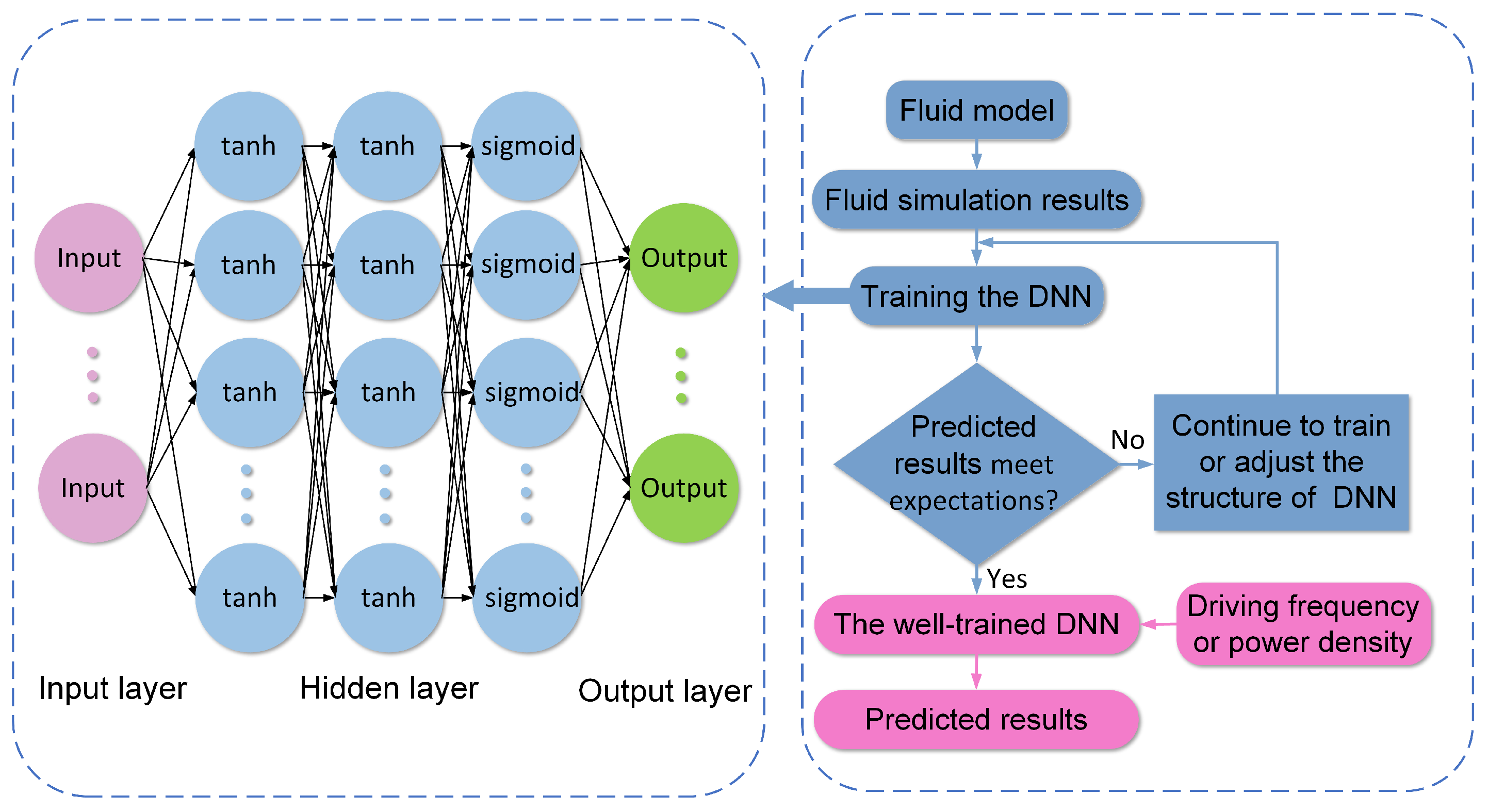
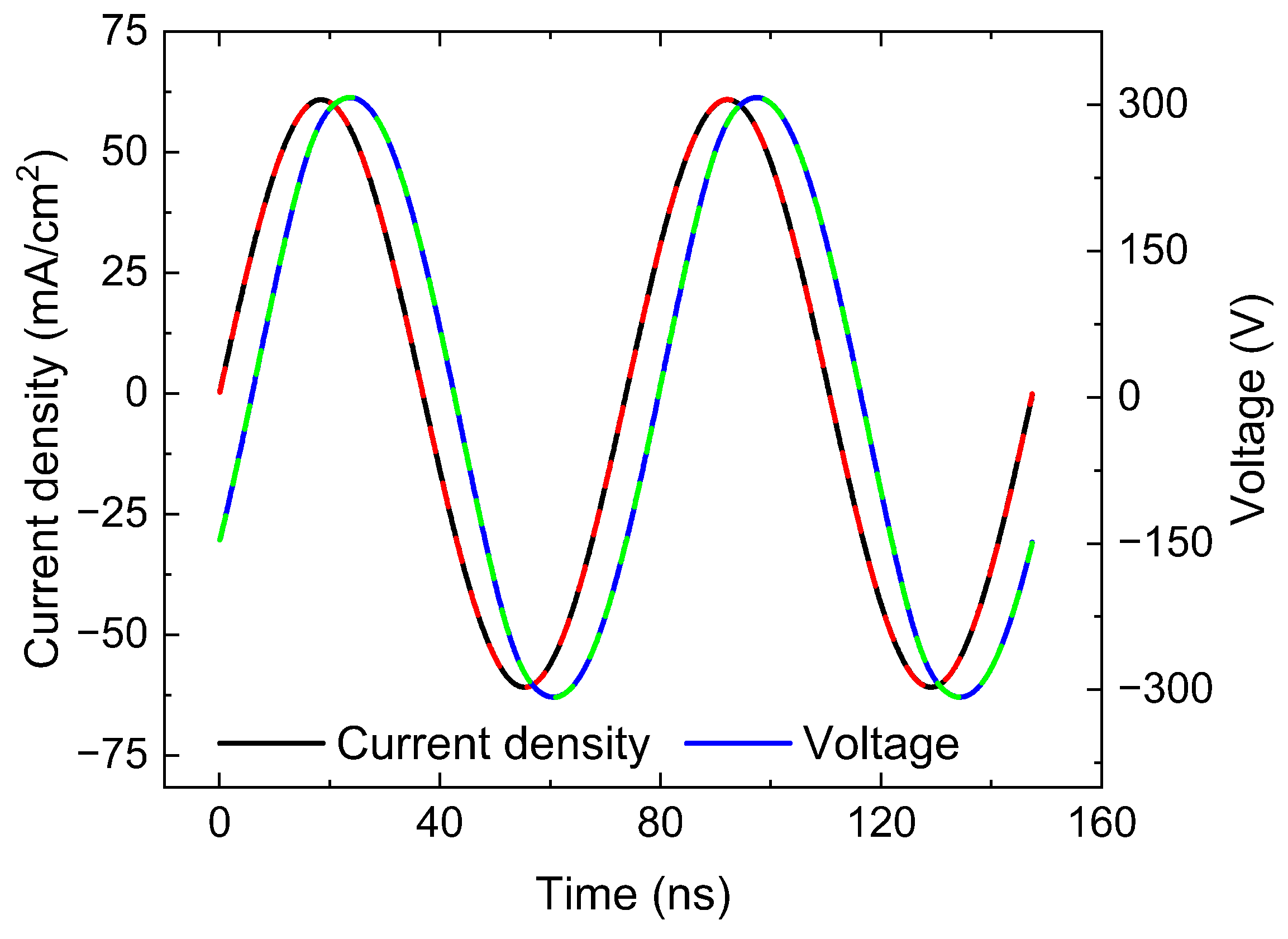
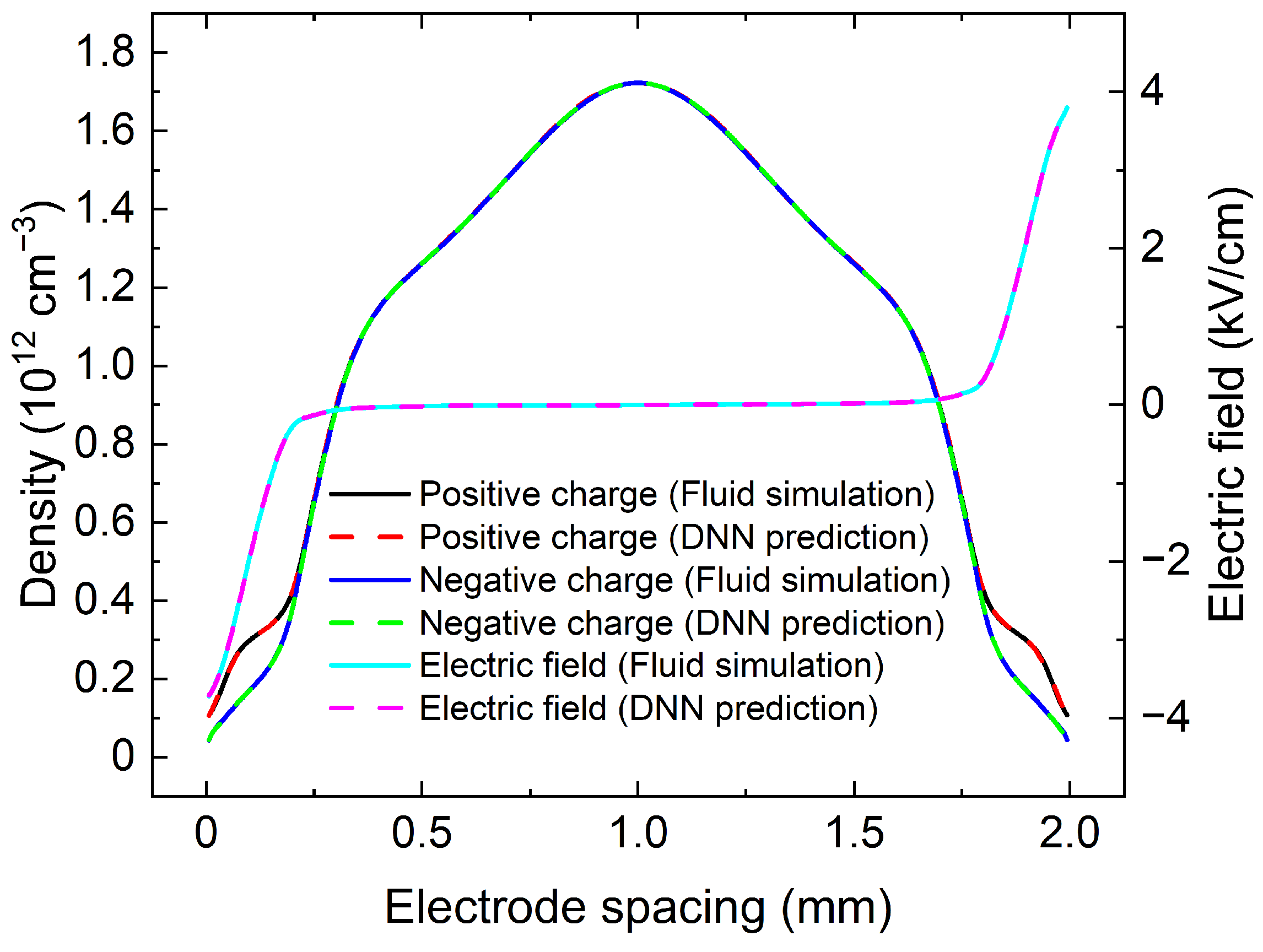
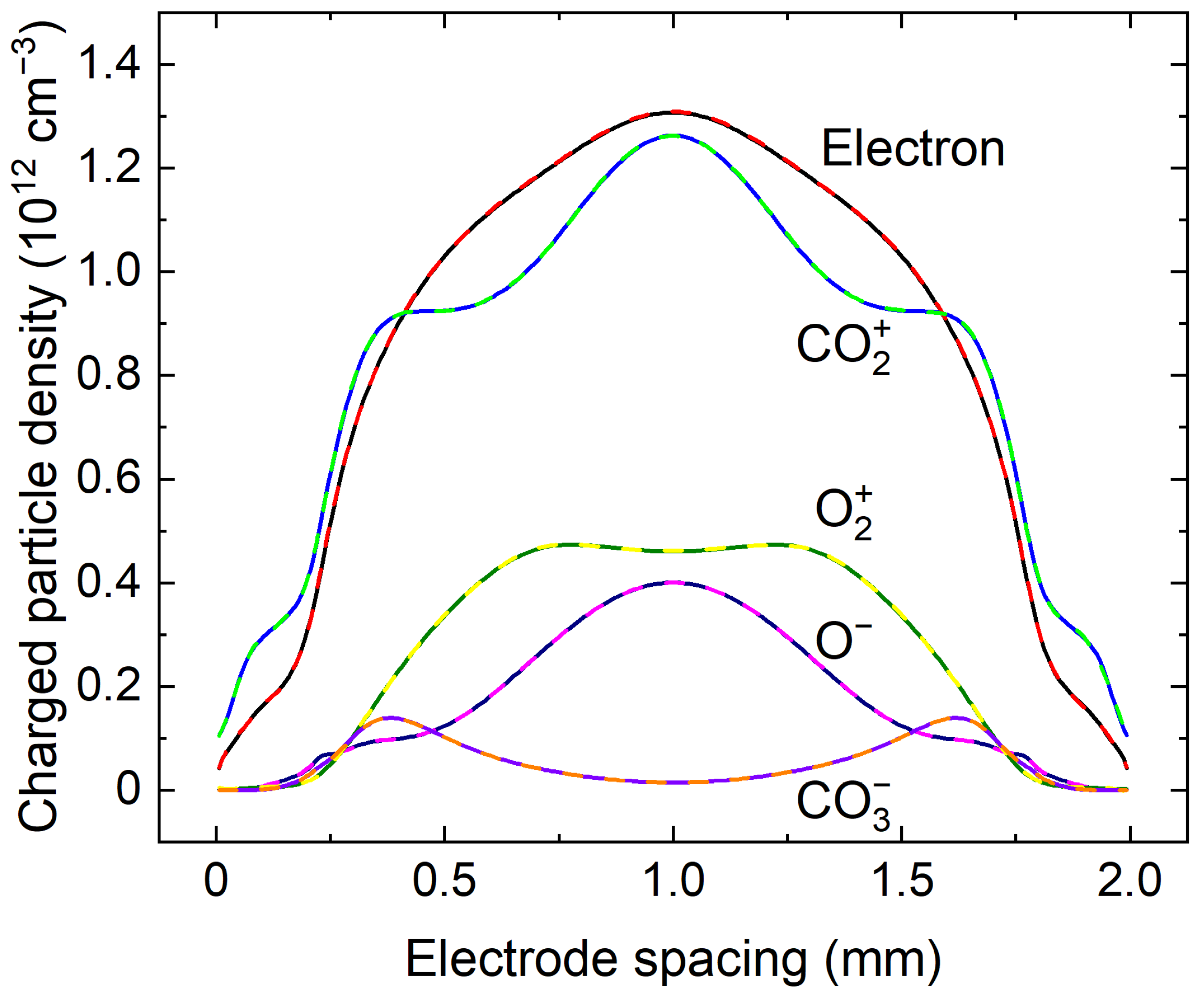
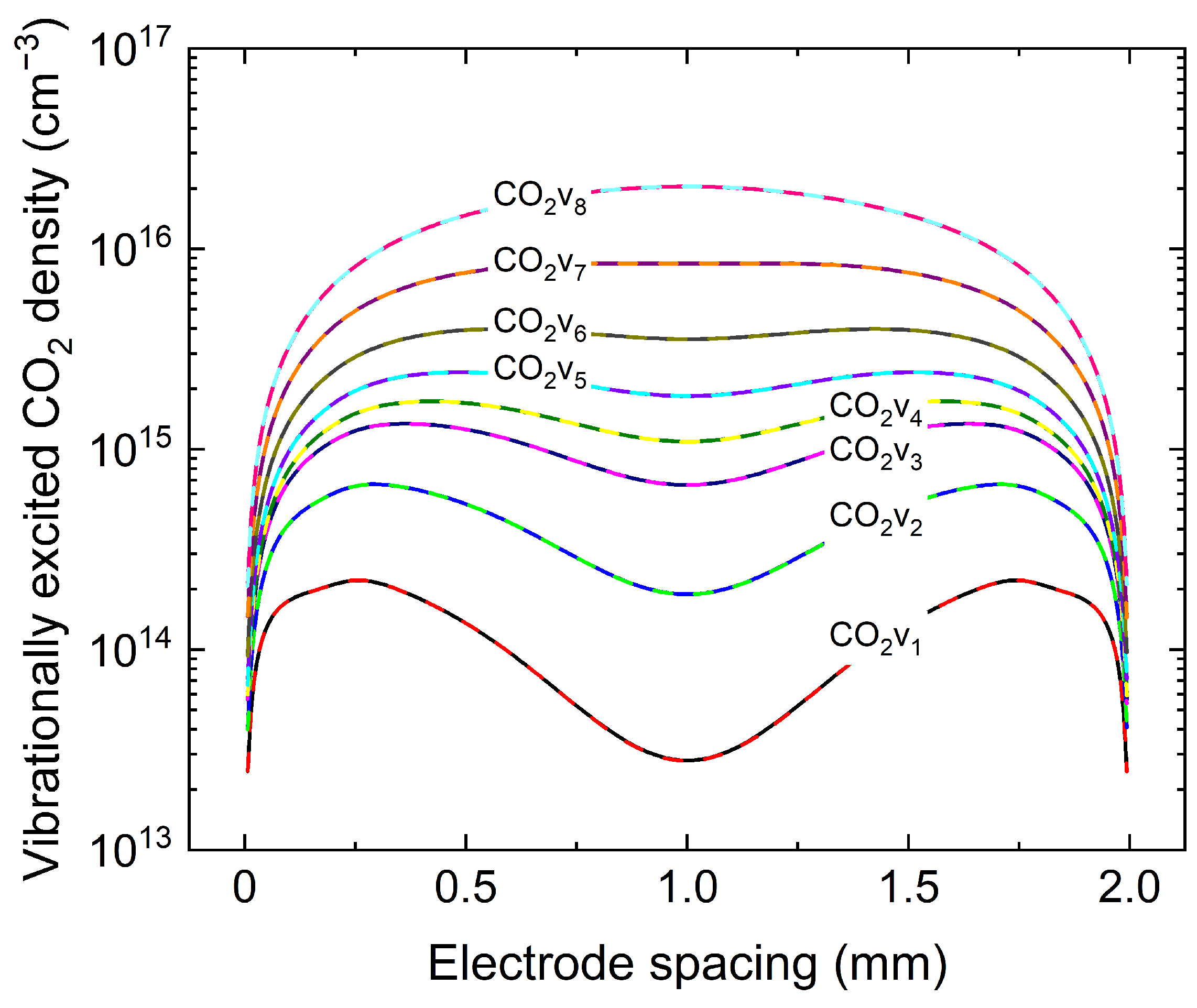

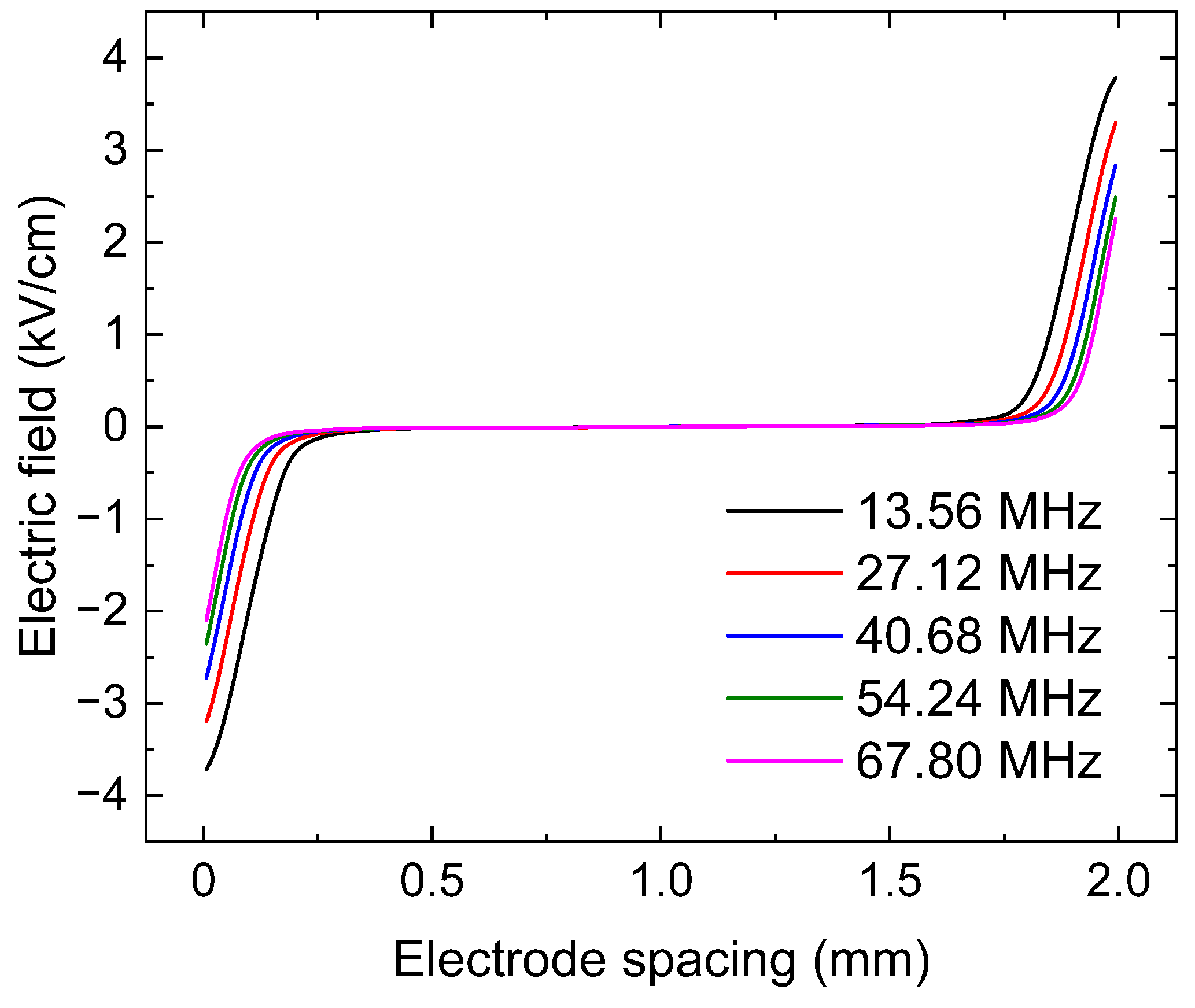

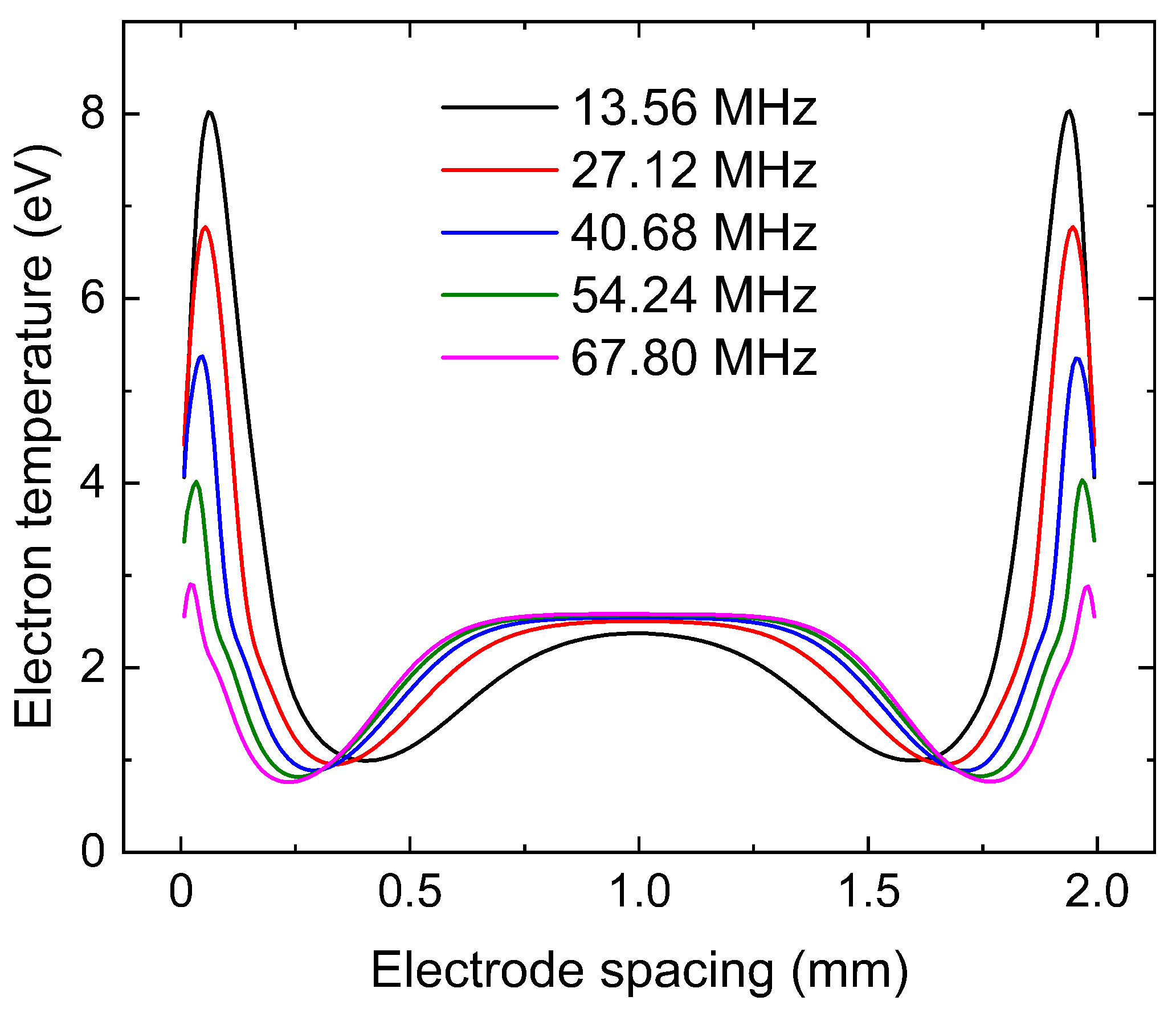
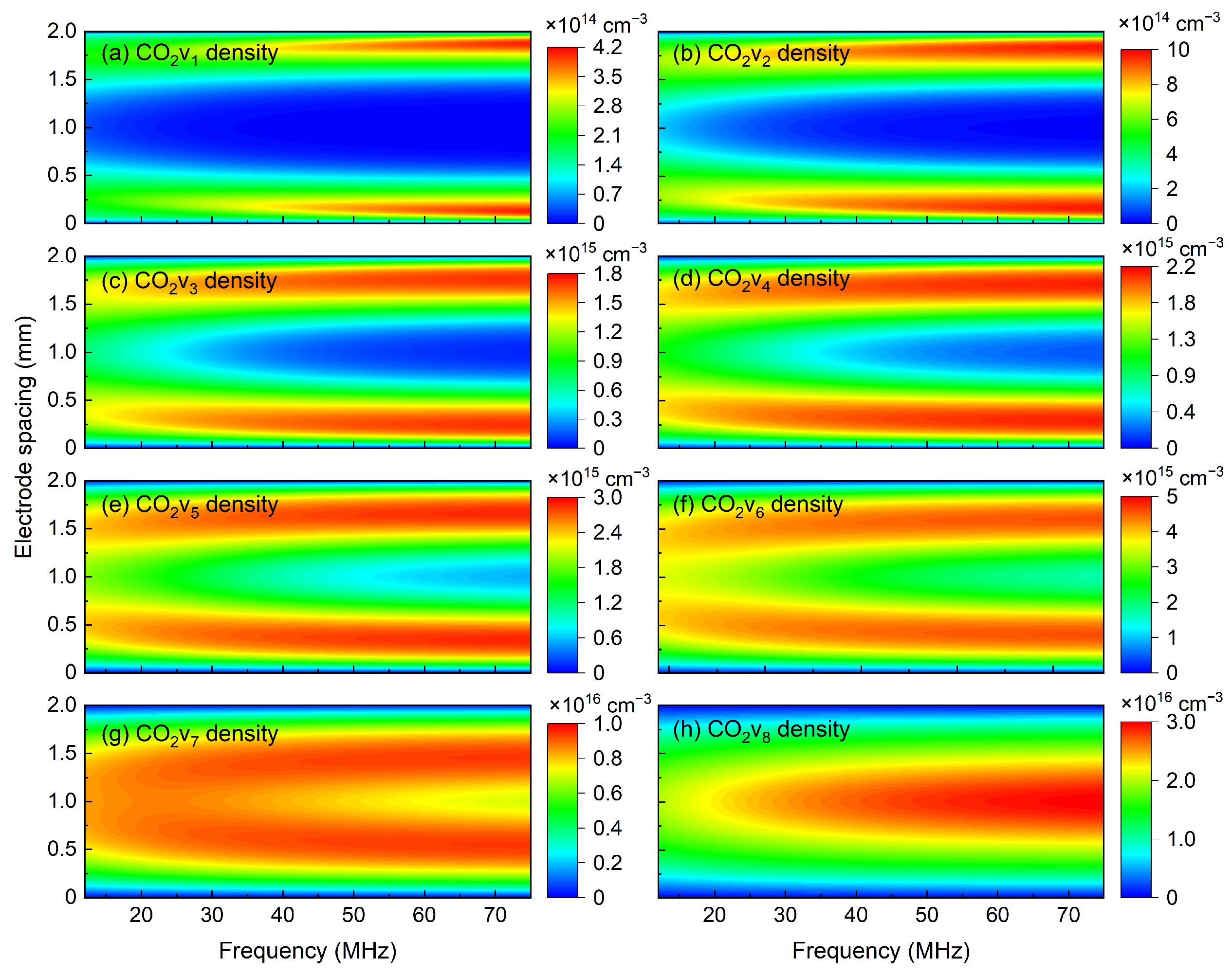
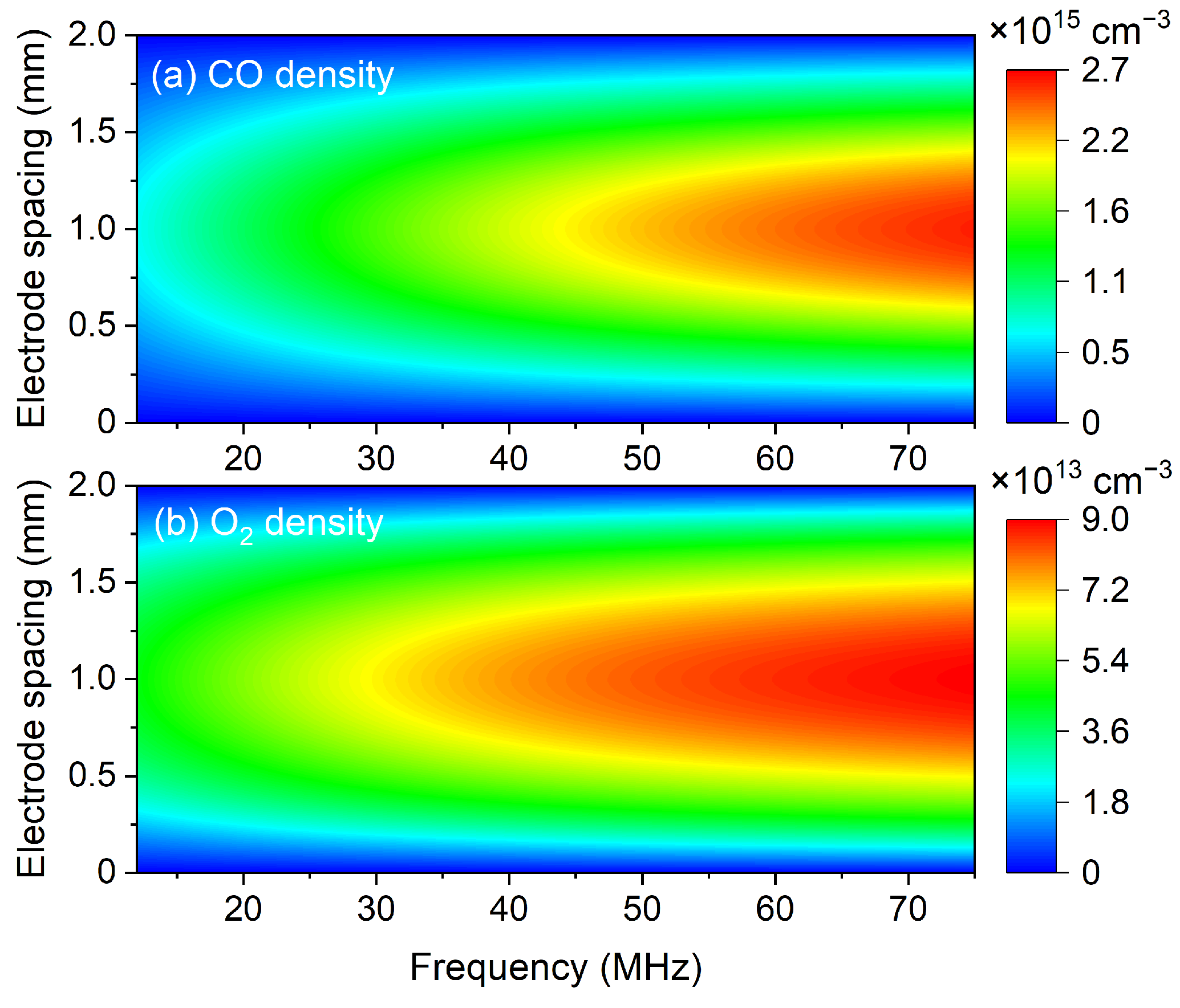
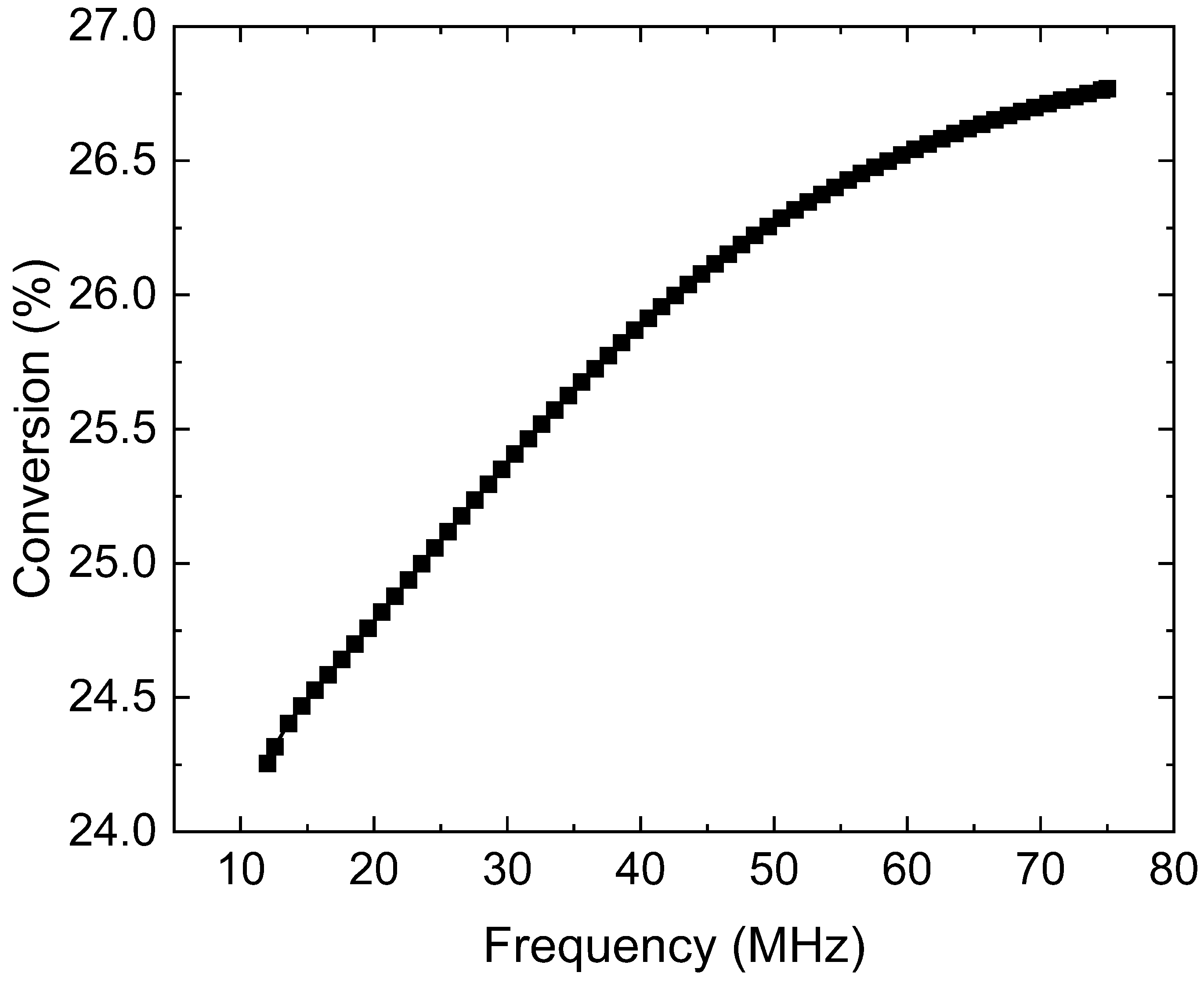
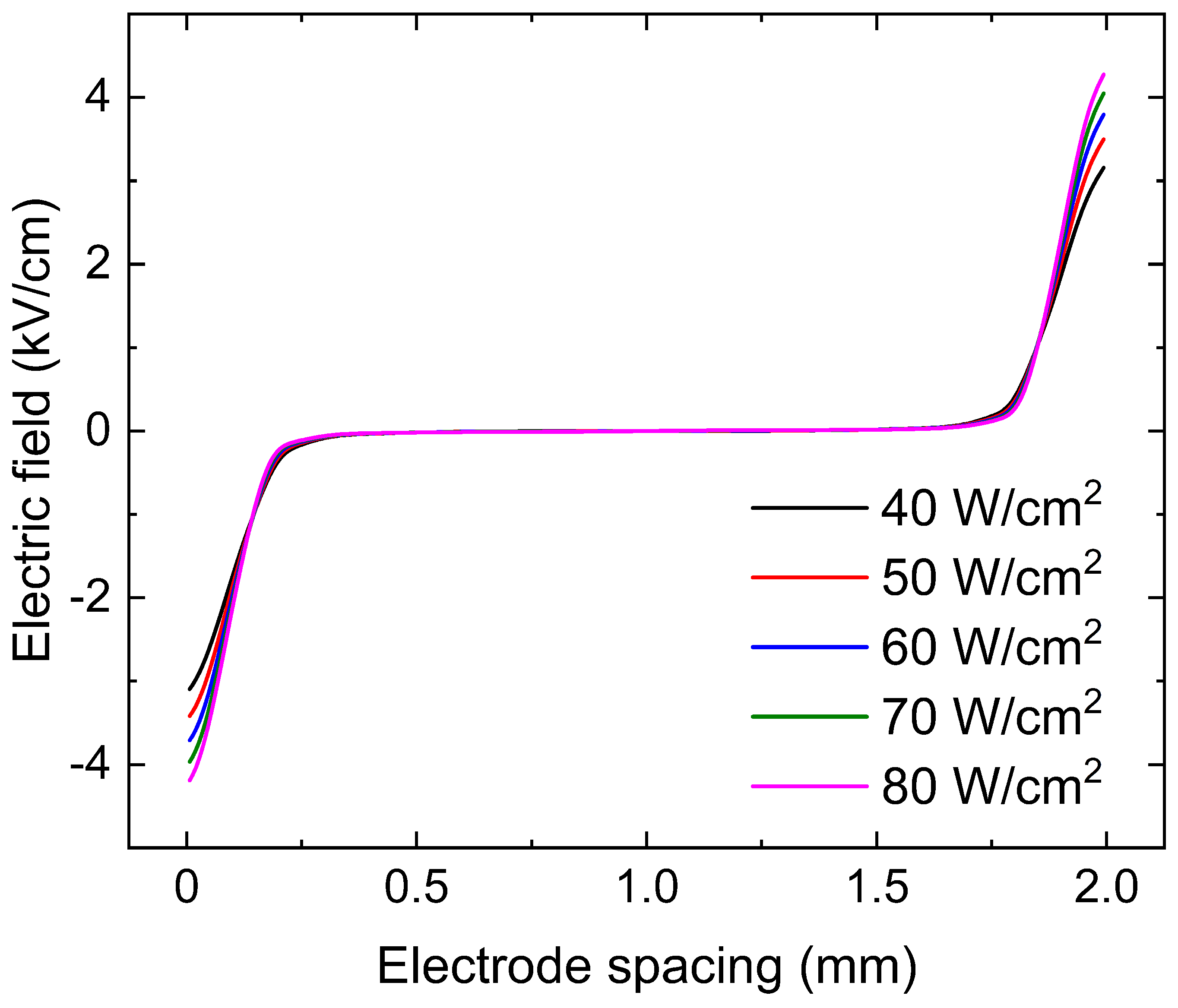
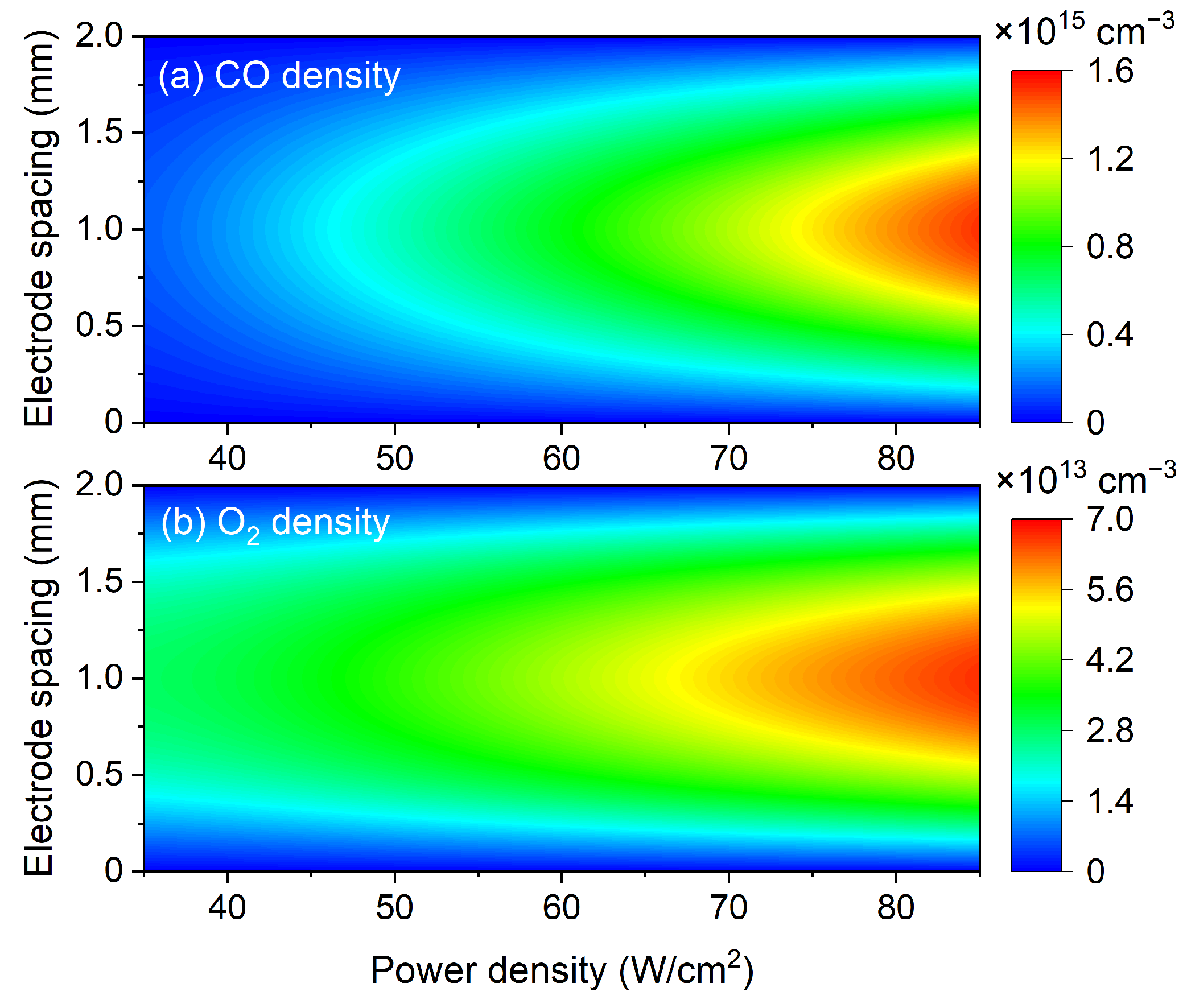

Disclaimer/Publisher’s Note: The statements, opinions and data contained in all publications are solely those of the individual author(s) and contributor(s) and not of MDPI and/or the editor(s). MDPI and/or the editor(s) disclaim responsibility for any injury to people or property resulting from any ideas, methods, instructions or products referred to in the content. |
© 2024 by the authors. Licensee MDPI, Basel, Switzerland. This article is an open access article distributed under the terms and conditions of the Creative Commons Attribution (CC BY) license (https://creativecommons.org/licenses/by/4.0/).
Share and Cite
Li, R.; Wang, X.; Zhang, Y. Real-Time Calculation of CO2 Conversion in Radio-Frequency Discharges under Martian Pressure by Introducing Deep Neural Network. Appl. Sci. 2024, 14, 6855. https://doi.org/10.3390/app14166855
Li R, Wang X, Zhang Y. Real-Time Calculation of CO2 Conversion in Radio-Frequency Discharges under Martian Pressure by Introducing Deep Neural Network. Applied Sciences. 2024; 14(16):6855. https://doi.org/10.3390/app14166855
Chicago/Turabian StyleLi, Ruiyao, Xucheng Wang, and Yuantao Zhang. 2024. "Real-Time Calculation of CO2 Conversion in Radio-Frequency Discharges under Martian Pressure by Introducing Deep Neural Network" Applied Sciences 14, no. 16: 6855. https://doi.org/10.3390/app14166855





